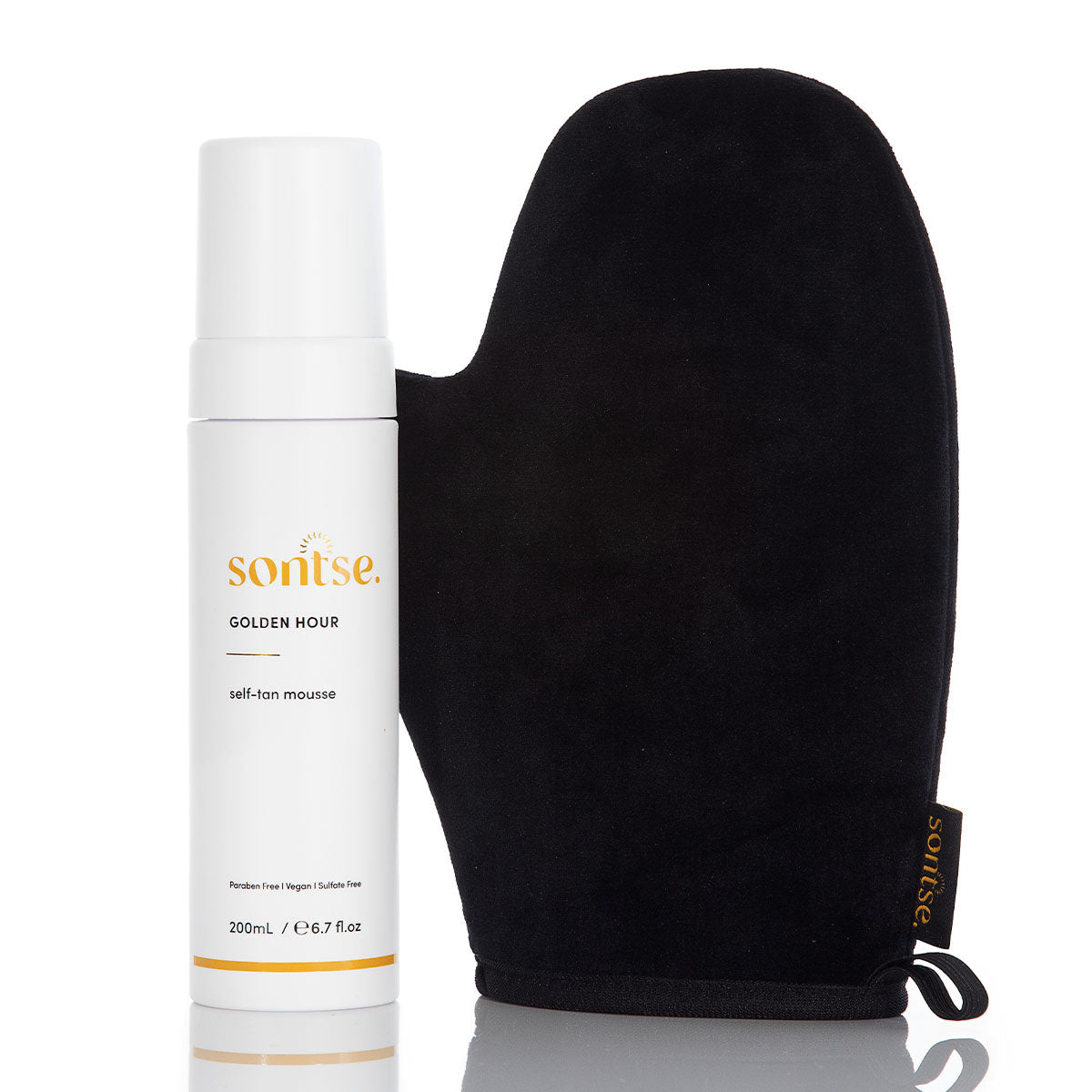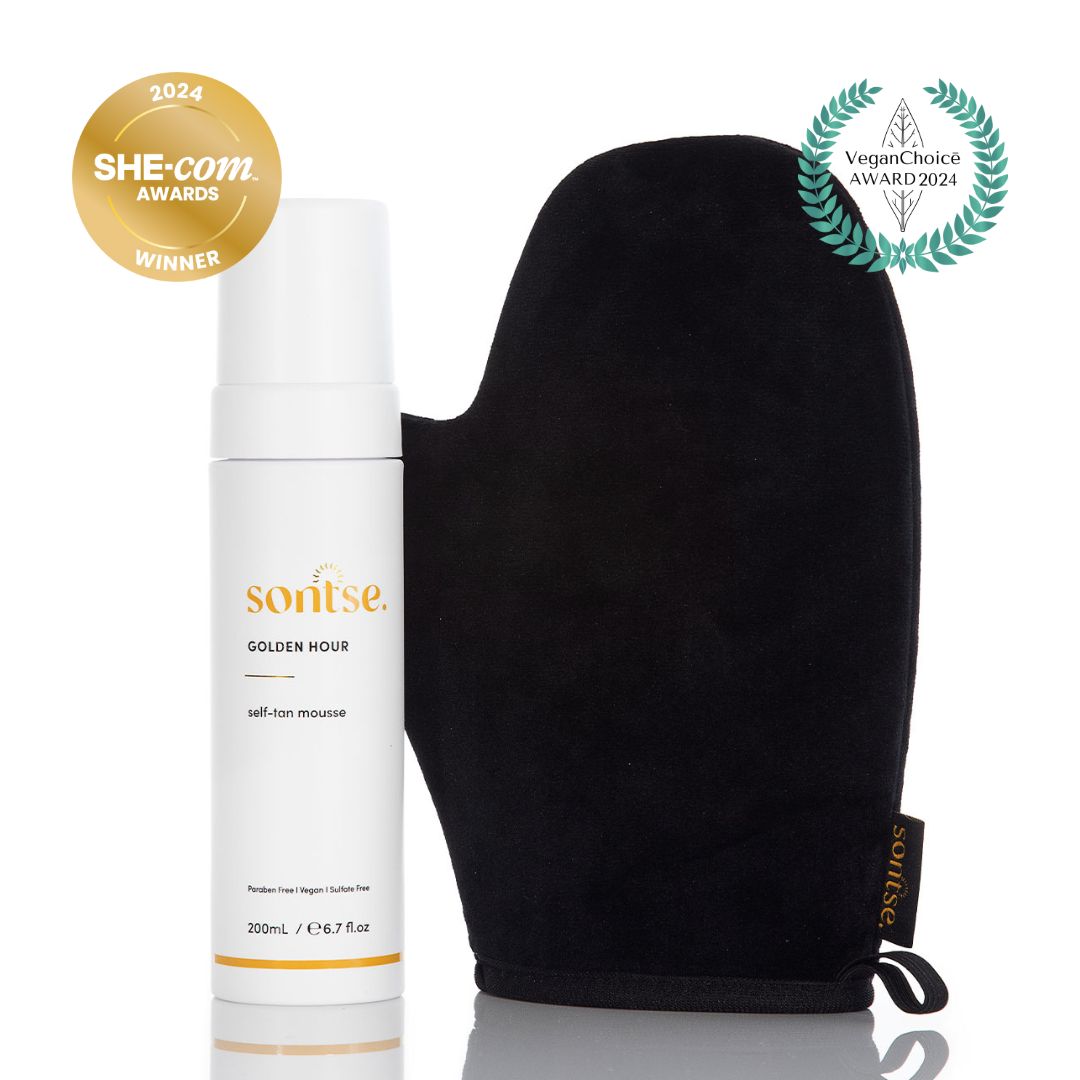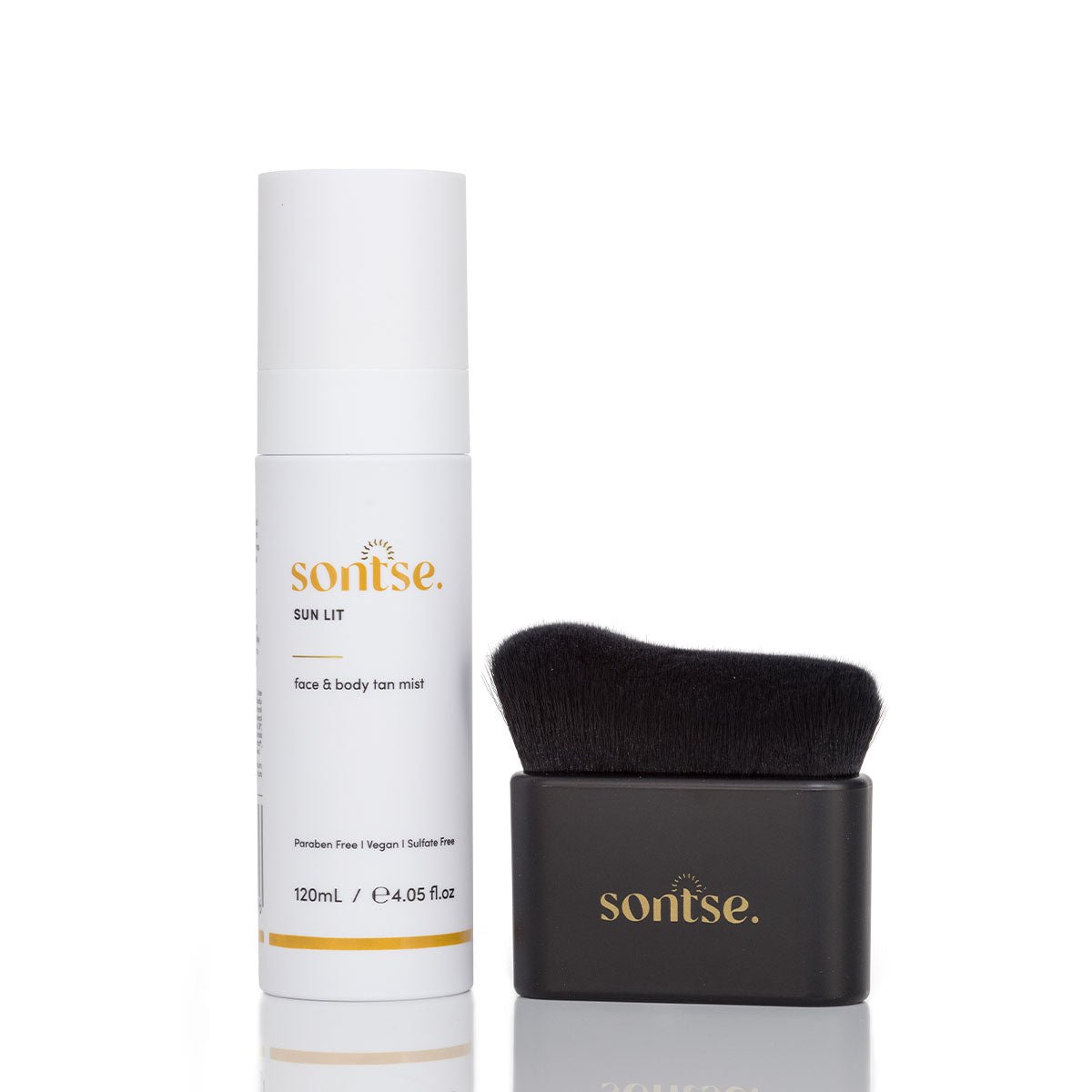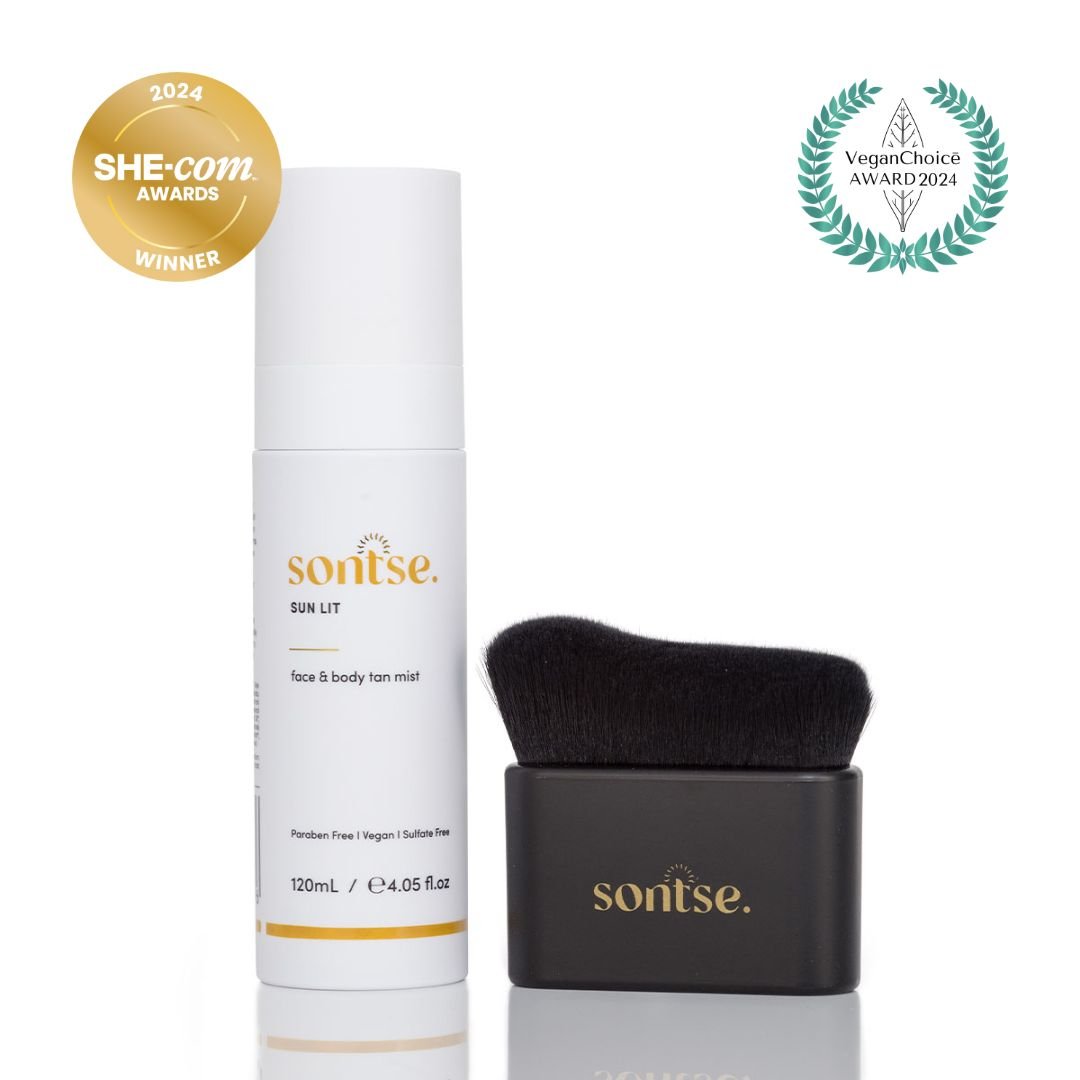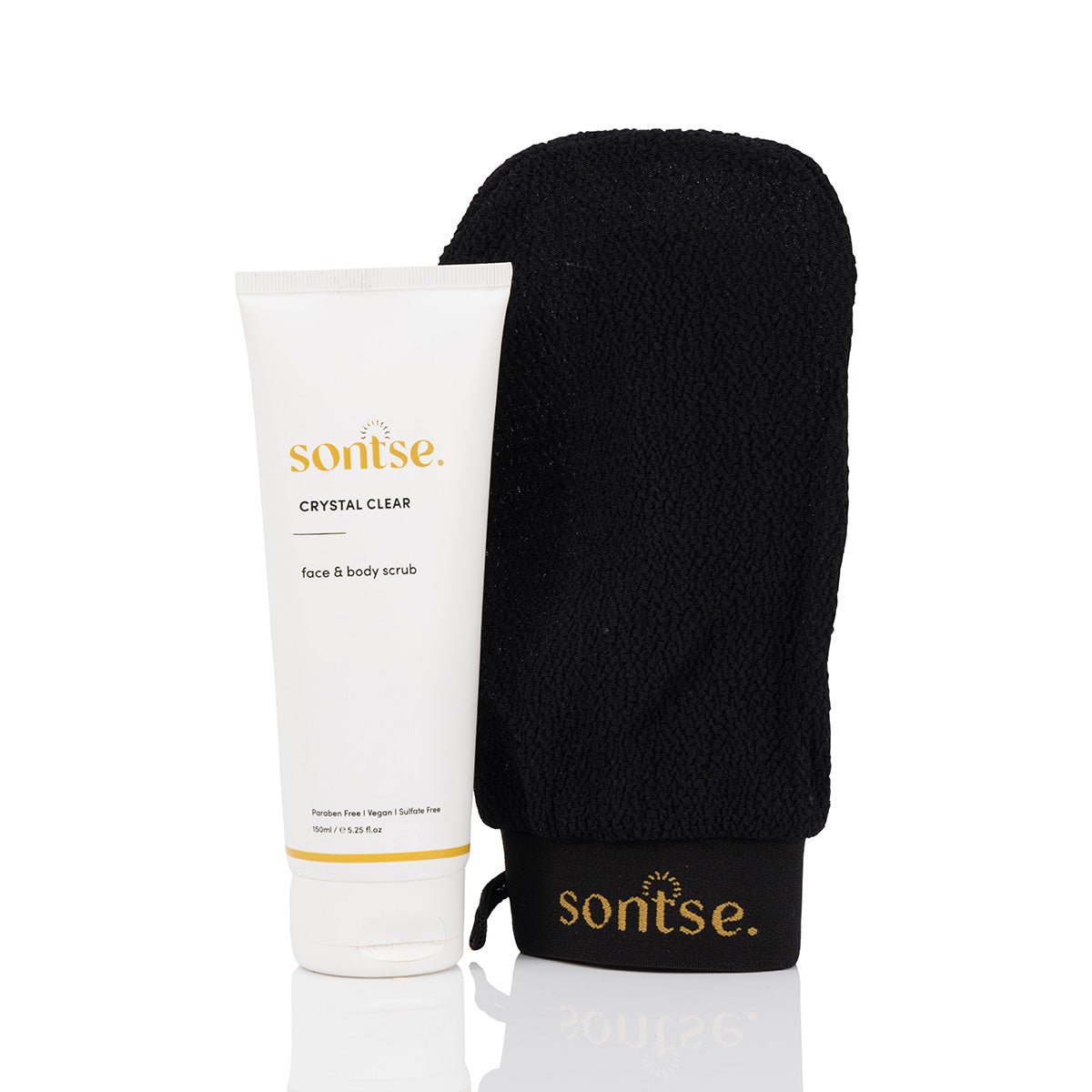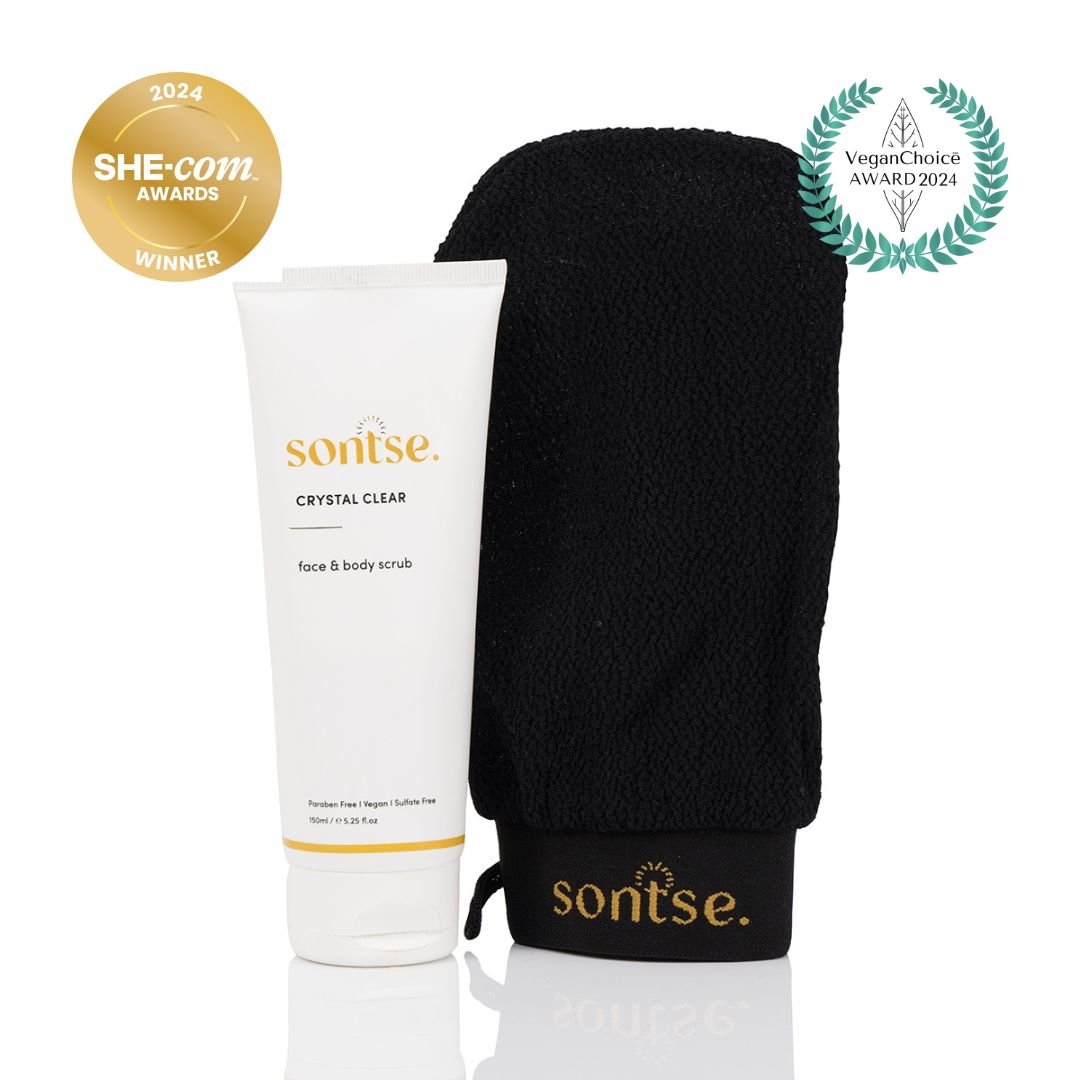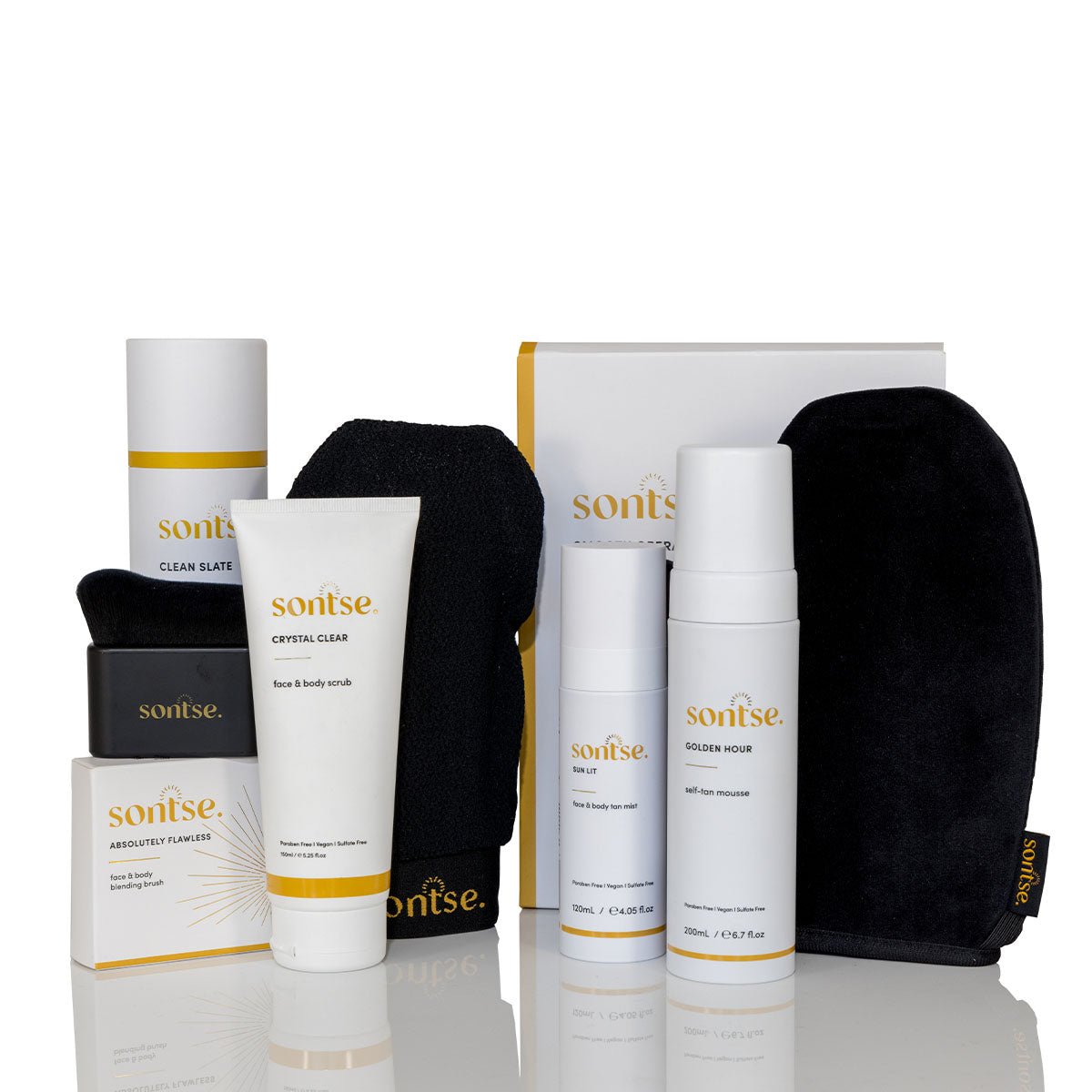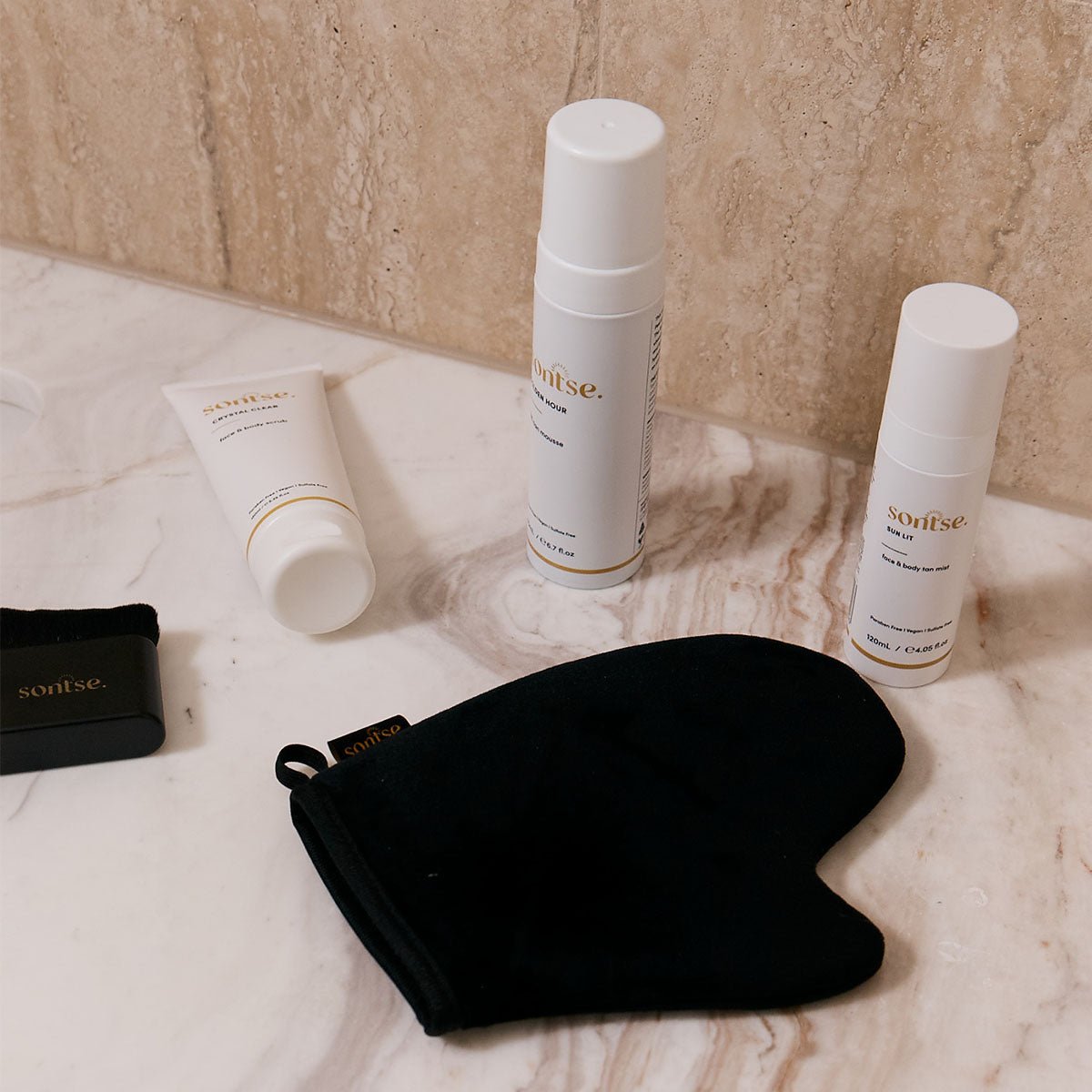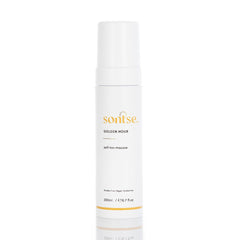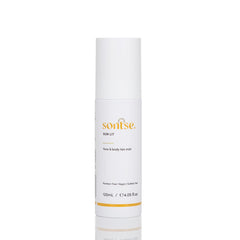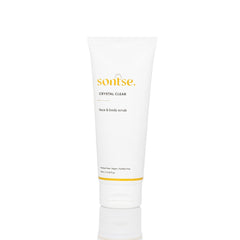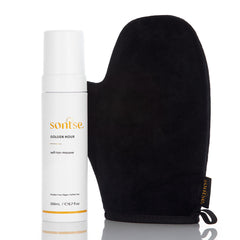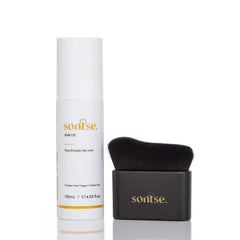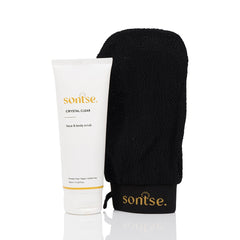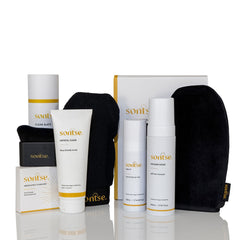Sceptical about fake tanning? Or have a well-meaning friend or family member who has ALL the questions since you’ve been sporting that sunless glow? If you’ve been stuck in answering ‘What is fake tan?’ ‘How does fake tan work?’, or even ‘Is fake tan bad for your skin?’, this is totally the blog for you. By understanding how it works, the benefits of a quality self-tanner and the science behind it all, you can be confident you’re doing something wonderful for your skin, and perhaps even lead some others into the (UV-free) light.
What is sunless tanning?
Sunless tanning is a safer way to tan without UV exposure. It’s basically an alternative method for achieving that gorgeously bronze glow using a ‘self-tanner’ compared to traditional sunbathing or using tanning beds, which can lead to skin damage and an increased risk of skin cancer due to UV radiation.
What is self tanner and how does it work?
So, what is a self-tanner? A self-tanner is any product containing dihydroxyacetone (DHA), a colourless sugar that interacts with amino acids in the outer layer of the skin to produce a tan-like colour.
These come in many forms, from lotions and sprays to mousse, gels and tanning wipes. Just take a look at our sunless tanning range, for example.
Depending on the unique formulation, a self-tanner will develop over a certain period of time and require you to then rinse off, moisturise and, of course, sunscreen-up before heading out for the day.
At Sontse, we have a full, comprehensive guide on how to tan, according to our toxic-free, Australian-made and owned formulations. You can learn how our tanning products work by reading our guide on how to tan.
What is dihydroxyacetone tanning (DHA tanning) and is it safe?
As we explained above, DHA tanning (aka dihydroxyacetone tanning) is a skin-safe approach to temporarily darkening the tone of your skin.
According to DermNet (2023),
‘Dihydroxyacetone (DHA) is a ketotriose monosaccharide commonly used as the active ingredient in sunless tanning agents (fake tan). DHA is synonymous with glycerone or 1,3-dihydroxypropan-2-one.’
Believe it or not,
‘Currently, DHA is the only FDA-approved agent for sunless tanning. It has also been used in vitiligo to temporarily induce pigmentation in affected areas.’ (DermNet, 2023).
But how does it work? DermNet (2023) explains,
‘DHA is thought to penetrate the stratum corneum when applied topically, where it undergoes a Maillard reaction (non-enzymatic glycation) with free amino acids such as glycine, alanine, leucine, and valine. The product of this reaction are melanoidins, which are large, pigmented nitrogenous structures resembling melanin, producing a darkening effect in the skin.’
We know… the science is incredible, right? Oh, and a seriously helpful little side note for you here… Wong (2015) had a killer point about DHA that we also stand by:
‘DHA only penetrates the very top layer of skin (the stratum corneum), which you may know is dead skin cells. This is why fake tans can’t last longer than about a week – that’s about how long it takes for the stained skin to wear off (that’s why if you look up fake tans that claim to last longer than a week or two, you’ll find tons of grumpy reviews – the skin sheds at a similar rate no matter what product you use!).’
What’s the best type of fake tan? Is fake tan bad for you?
Ok, so this is kind of a trick question. At Sontse. we’re big on helping our customers master the art of self-tanning with a very custom-looking tan for them. This means we help you think about whether a mousse or spray will be better for your goals.
A mousse, like our Golden Hour Self-Tan Mousse, for example, will provide you with a fuller, deeper coverage that is totally buildable to achieve the tone you desire.
On the other hand, for our fairer friends, we’d suggest using our mist, Sun Lit Face & Body Tan Mist, which is perfect for the face and decolletage, or gradually easing into a glow.
So, as for different product types – there is no one-size-fits-all. However, when it comes to ingredients and formulations, boy, do we have an opinion… and an important one at that:
As skin safety ambassadors, we believe that the best type of fake tan is one that has been scientifically formulated using non-toxic ingredients that are truly safe for the skin.
And this is where the debate on natural vs unnatural self-tanners comes in.
Is self tanner safe? Natural vs unnatural, does it make a difference?
Although it may be tempting to assume that natural is always better, the thing to remember here is that not all natural self-tanners are created equal. This is where the integrity of the brand will ultimately shape what kind of product you hold in your hand.
For example, at Sontse. we did a heck of a lot of research to identify that just because an ingredient is ‘natural’ doesn’t mean it is safe for the skin… think about it… poison oak is natural… but you definitely don’t want to be smearing that all over your body. This is where the cosmetics industry has a lot of learning to catch up to.
On the other hand, toxic, synthetic chemicals can also be just as harmful.
So where do we sit? Working in collaboration with our labs and experts in this field, we are dedicated to creating the highest quality, scientifically formulated products.
We have discovered that ‘clean’ ingredients are, in fact, the safest choice for a cosmetic product like a self-tanner. This is because a clean product will put human health first and uphold integrity with their formulation, ensuring it is safe. As we do, with all our products and formulations, where we combine a blend of science and nature.
We use a blend of plant-based, organic and natural ingredients combined with a safe amount of science to deliver a toxic-free, allergy safe and made safe product, as certified by Safe Cosmetics Australia.
Is sunless tanner safe?
Again, if you’re asking the question, ‘Is sunless tanner safe?’ or ‘Is fake tan bad for you?’, being diligent to get to know the ethos of the brand you are buying from is incredibly important. Look for clues like whether they have taken the time to seek independent third-party certification and whether they take skin safety and sourcing quality ingredients seriously.
The good news is, and in case you’re wondering, we certainly do!
Our products proudly carry the Clean & Conscious badge and have won multiple awards for our clean ingredients and stunning formulas.
If, however, you are wondering if sunless tanning is safe in general, be sure to check out our article on How to tan quickly and safely, which will quickly debunk any ideas that have kept you thinking that long, daily sun exposure would somehow be a better option.
Which is better? Spray tan vs at-home self-tanners…
When it comes to getting that gorgeous sun-kissed glow, the choice between a salon spray tan and DIY self-tanners really boils down to your personal vibe.
If you don’t want to think about how long to leave your tan on for and can’t be bothered doing the application yourself, then a salon spray tan might be your go-to, despite a higher upfront cost.
On the flip side, if you're into bringing the salon quality into an at-home pampering session, with the freedom to control your tan application, then self-tanners are your squad. Also, the benefit of this choice is that maintaining the look of the tan and extending it out is a whole lot easier.. and more cost effective!
Either way, whether you’re quick to book the salon or already consider yourself a home-tanning queen, remember that with the right self-tanning tools up your sleeve, you can totally become an at-home master in self-tanning, saving you time, and money in the long run.
So, there it is, friends, hopefully we did a good job of helping you understand how fake tan works and giving you that well-deserved pat on the back that what you are doing for your body and confidence is super skin-loving!
Written By Liana Pantalone – Beauty & Skincare Copywriter at Climbing Vine Co.
References
DermNet. (2023, December). Dihydroxyacetone (DHA) — DermNet. DermNet. Retrieved February 3, 2024, from https://dermnetnz.org/topics/dihydroxyacetone
Wong, M. (2015, November 3). The Science of How Fake Tan Works. Lab Muffin Beauty Science. Retrieved February 3, 2024, from https://labmuffin.com/the-science-of-how-fake-tan-works/

